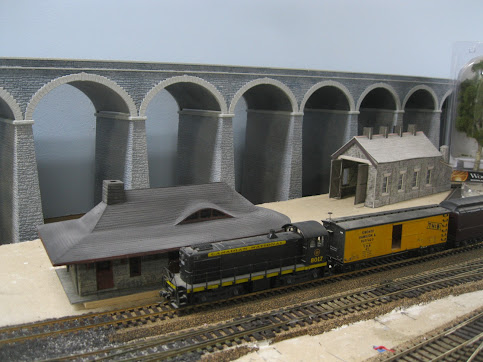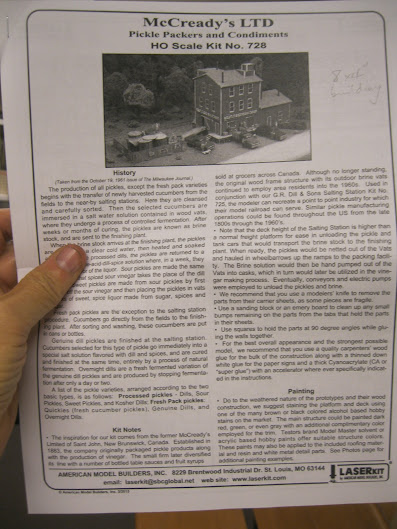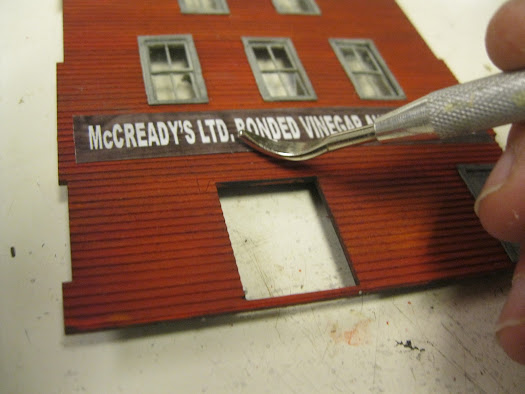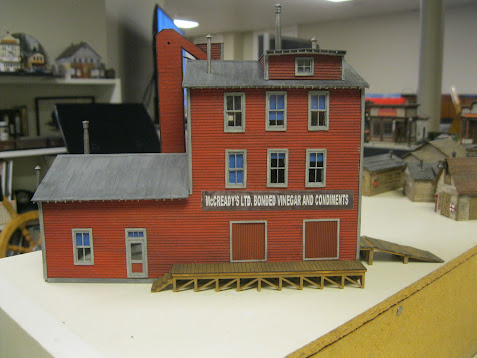East Brookfield MA Station
Railway Design Associates brought out the East Brookfield, Ma station many years ago.
The kit was offered in two formats as per material; Urethane or Hydrocal.
My friend, Professor David Gardner purchased the model in urethane and it has been sitting on his shelf for decades now. It was a thrill for me to construct this kit for him!
The depot served the Boston and Albany RR until 1957 when the New York Central took over the line.
Here is the finished model with the concrete platform that may lose way to a wooden one eventually.
I like the look of the rounded end to the station and the "eyebrow" dormer window above.
Yes, David purchased this kit many decades ago. It is fun for me to build new structures "to me" from a kit manufacturer I hadn't worked with before.
The elevation drawings are superb.
That lovely rounded east elevation.
The chimney is located on the western end of the station.
The kit comes with less than a handful of pieces that need to be glued together to form the main station. Following that, the windows, doors and under eaves supports go in.
I first rinsed all urethane parts in dish detergent and gave them a good scrubbing. Grey paint with a "wash" of black acrylic helped "pop" the stonework. Maroon acrylic paint was used for the windows, doors and trim.
I had to file a little bit of the window and door openings to accommodate the window and door sections.
For the curved wall, the windows were meant to be glued from the inside.
One is in place.
Coming together.
The entire roof is one large chunk of heavy urethane! I painted it black and then brushed on some grey PanPastels.
For the sidewalk platform, the kit offered a simple rectangular piece of styrene. I carved in the squares and the smaller cracks in the sidewalk platform. Following a paint of acrylic "concrete" I ran a wash of black acrylic paint once more to "pop" the details.
After painting all windows, door and trim a maroon colour I also ran a wash of black for weathering purposes.
As I mentioned, only four pieces form the entire station with the fifth being the roof. Note where the curved end "tab and slots" into the long rectangular walls. Some filing was necessary to ensure a good fit. I didn't like the fact that I could still see the grooves in this area so I later added a downspout and some lumber to support it which hid the joint nicely.
A view from the east end.
Check out the thickness of the urethane walls where the curved window section juts out!
Looking good so far!
My weights ensure the station is glued to the sidewalk. Some glue is also noticeable...I later wiped it and no evidence appeared afterward.
To hide any minor imperfections where the base of the roof met the top of the wall, I took some narrow styrene strips and painted them a similar grey tone and ran them around the walls where they meet the roof.
With the angle braces in place and a touch of "gloss" to go in the eyebrow windows which I painted black...the depot is done.
I have brought it over to David's railroad to fit it in place. It will eventually reside trackside with a wooden platform rather than the sidewalk version that came with the kit.
It matches up nicely with that gorgeous viaduct that David's friend, Carl Lindon, had built from scratch!
I don't mind that you can see through the station to the other side as there will be other scenery in back eventually!
We run a train past the station!
A view from the other angle.
An old image found on-line.
Indeed, she's a beautiful depot!
Hey, I think I have shrunk down to HO scale size once again! This photo was taken in the summer at the harbourfront in Brockville, Ontario (as was the one from the previous post - only in a different year). We are alongside the mighty St. Lawrence River at this location.
Thanks for checking in on one of my latest builds!
All the best, Mike Hamer, Ottawa, Ontario<Canada

























































































































